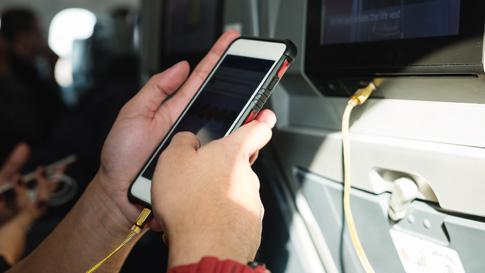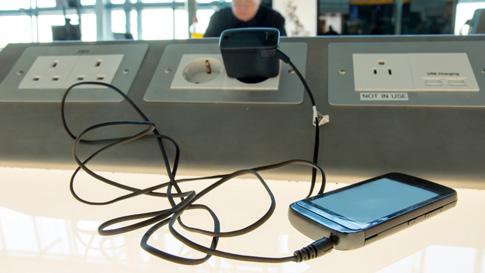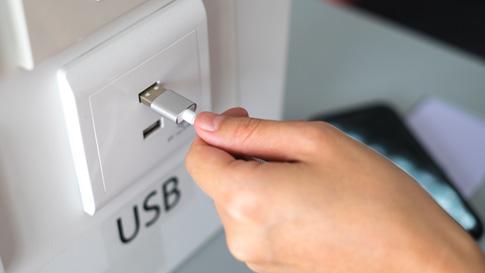Today's high flyers rely more than ever on their travel tech, from laptops to iPads to smartphones along with must-have accessories such as noise-cancelling headphones.
And as a rule, that tech is getting better when it comes to battery life.
Most modern notebooks delivery close to ten hours on a single tank, as long as you're not indulging in heavy-load tasks such as an inflight Game of Thrones binge-fest in HD.
Tablets and '2-in-1' devices do even better when it comes to parsimonious power consumption, which is part of their appeal to many road warriors who've ditched laptops for a tablet+keyboard combo.
All the same, when the juice runs down you're pretty much marooned. Here's how to avoid the 'low battery' panic.
Up in the Air

Just about all business class seats these days include their own AC and USB power outlets. Even if you're not using your carry-on tech, plug it in to top up the battery. This of course means packing the relevant cables and chargers in your carry-on bag, although that can add to bulk and clutter.
Consider the minimum number of cables: the one USB cable can do for your iPhone and iPad, and usually the same micro-USB cable will suit Android and other devices along with noise-cancelling headphones.
Just make sure they're good quality ones, not cheap $2 shop knock-offs. It's worth investing a little more in a set of high-quality cables (such as Anker, Blitzwolf and Metrans) which won't break just when you need them the most. Also consider a universal AC adaptor with inbuilt USB ports rather than carrying several chargers.
Stuck in premium economy or economy? Per-seat USB sockets are becoming the norm, although AC sockets will usually be shared with your seatmate.
At the Airport

The best airport lounges have AC and even USC ports everywhere: beside almost every chair and atop work benches. And the rest? You'll need to choose where you sit based on where those power sockets are.
Business centres or work hubs are top of the list, but if you'd rather be in a more pleasant part of the lounge, keep your eyes open for AC plates on walls and even pillars.
My advice is to always plug in at the lounge. Even if your laptop or tablet is still at a healthy 80% charge, you can never tell when your seat on the plane will be the one where the power sockets don't work – so it's a good habit to get into the 'always top up' routine.
Public Access Power

Don't have lounge access? Some savvy airports are installing dedicated and clearly signposted AC and USB recharge stations around the terminal and at boarding gates.
Stuck at an airport which still belongs to the 1990s?
Check the support columns throughout the passenger waiting areas. More often than not you'll already see some laptop users clustered around those columns with AC outlets.
Those columns can get pretty crowded, so if you have a lot of domestic travel in the USA, the UK or Europe, consider packing a slim-line double adaptor that's compatible with the local AC socket design. (Even if all the available powerpoints are already being used by fellow travellers, they'll be fine to let you share 'their' powerpoint if you BYO adaptor.)
Tricks of the Trade

Also at some US airports, AC outlets are tucked away out of sight under a bank of payphones. If it's outside peak hours, watch for the cleaning crews: their vacuum cleaners and such will have to be plugged in somewhere!
Most airport cafes will have a few powerpoints, typically on the wall or sometimes on a support column. So grab a coffee, plug in your laptop and relax. You may however need to manoeuvre your table into the best position and be sure no-one can trip over your AC cord.
I even know travellers who've perched themselves at the end of an airport bar and, with the blessing of a friendly bartender (and provisional of course on ordering a drink or two) plugging into an AC socket on the other side of the bar.
On the Road

As with airport lounges and inflight, make it a habit to plug in and recharge your tech overnight. To make that easier, pack an Australian power board – ideally one with a pair of 2 amp USB sockets plus surge protection – when you head overseas.
You can plug that one board into the AC socket with your universal adaptor, and then hook up all of your chargers using their native Aussie plugs instead of juggling and swapping between universal adaptors. Some travellers even pack a compact two- or four-port 'travel powerboard' into their carry-on bag.